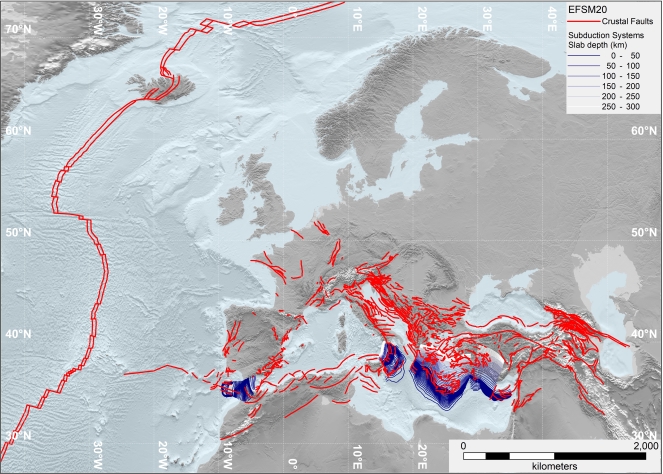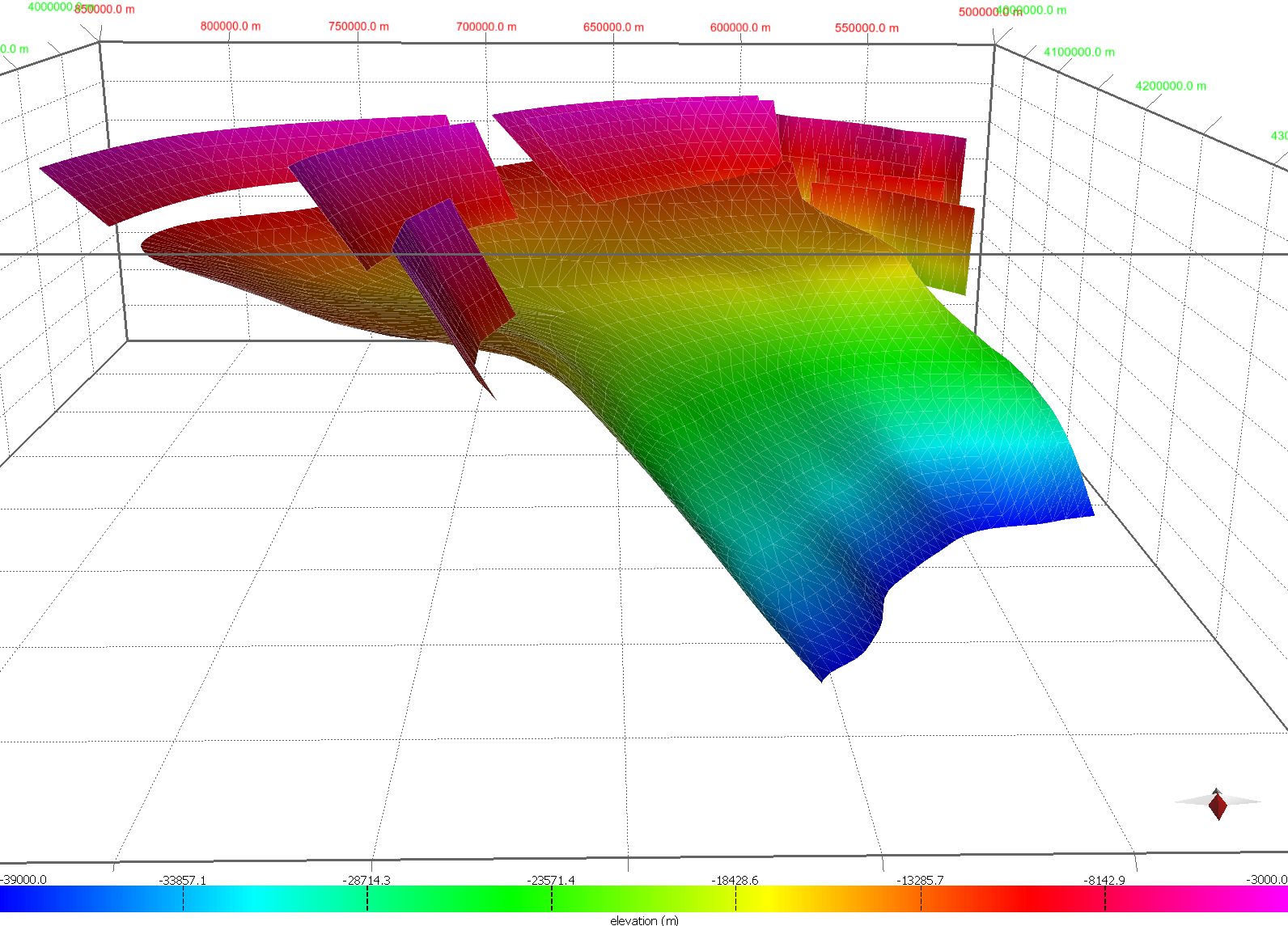- Details
- Category: datasets
The European Fault-Source Model 2020 (EFSM20) was designed to serve as input to the European Seismic Hazard Model 2020. For these reasons and its intrinsic nature, EFSM20 cannot be guaranteed to be complete, accurate, and updated in any part necessary for its use in different contexts or applications. Although we made every possible effort to supply the best available information, no warranty, expressed or implied, is provided regarding the accuracy and reliability of the data supplied in EFSM20. Users are invited to consider the inherent epistemic uncertainty of such a database in earthquake-related hazard analyses (PSHA, PTHA, PFDHA). We recall that EFSM20 was designed for analyses at the scale of a continent (the Euro-Mediterranean region) and that it is thus necessary to add local and site-specific investigations when using EFSM20 data for studies at more local scales. Users are also cautioned to carefully consider the nature of EFSM20 content before using it for decisions concerning personal or public safety or concerning business involving substantial financial or operational consequences.
- Details
- Category: datasets
The datasets distributed in these web pages were designed within a pilot study to develop new datasets or strengthen existing ones to provide innovative, strategic data-service portfolios. For these reasons and their intrinsic nature, they cannot be guaranteed to be complete, accurate, and updated in any part necessary for their use in different contexts or applications. Although we made every possible effort to supply the best available information, no warranty, expressed or implied, is provided regarding the accuracy and reliability of the data supplied here. Users are invited to consider the inherent epistemic uncertainty of such datasets in earthquake-related hazard analyses (e.g., surface displacement, ground failures, ground shaking, tsunami). Users are also cautioned to carefully consider the nature of the dataset contents before using them for decisions concerning personal or public safety or concerning business involving substantial financial or operational consequences.
- Details
- Category: datasets
The services and interoperability layers for distributing earthquake-faulting data in 4D are products of the project PNRR MEET WP11 IPSES Activity 11.9a.
Four main datasets constitute this portfolio.
- SF3D, Seismogenic Faults in three Dimensions;
- SFIT - Surface Faulting events of ITaly;
- DIP - Database of Italian Paleo Earthquake;
- Interoperability layer between seismogenic sources of the DISS database and active and capable faults of the ITHACA database








